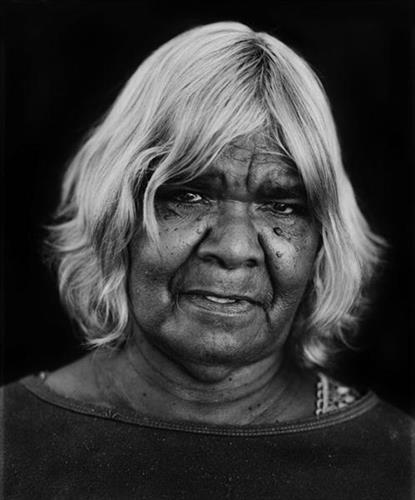111581949613
Puntawarri
“Nice place Puntawarri- they got houses there, new houses, no one lives there though. Plenty bush tucker, wamurla (bush tomatoes), jinyjiwirrily (wild gooseberry), minyarra (bush onion)- you can find them in salt bush Country, in the soft ground, too many good things growing! Wama (nectar) too, like a bottle brush, you got to bite into it or you can soak it in water. They have a soak there too, for the old people that is.
We used to be staying in the dormitory with Dale [Helen Dale Samson] and all the rest of the girls, there was a lot of girls. We had a girl dormitory, and there was a boys one. Later on when they finished school a lot of the girls left, they gone to get married and work on the stations. I was on those statins with the mustering, Ethel Creek station and all around here [Newman] as well. All the stations- Yunkurra [Yunkurra Billy Atkins] there to. I wasn’t mustering- I was cooking. Getting up early in the morning 6 o’clock, cooking all the meals. I was in Newman station staying with the Nyiyaparli people, nyarru (poor thing). They grew me a up a little bit, they know me.”
–Miriam Atkins
Puntawarri is an important cultural area located on the middle stretches of the Canning Stock Route and east of the Jigalong Aboriginal Community. It is also the site of a now abandoned community, and a rockhole, waterhole, creek and lake. Puntawarri’s close proximity to Jigalong Mission (now Jigalong Aboriginal community) made it a popular site for Martu to visit and camp at over weekends during the ‘mission days’. Though she grew up in the dormitory at Jigalong, she spent her weekends and holidays in the bush, camping at sites such as Puntawarri with her extended family
For many Martu, like Mirriams ’s family, Jigalong Mission was the site where their pujiman (traditional, desert dwelling) lifestyle came to an end from the late 1940s as they transitioned to a life as stockmen and women working in cattle stations in the Pilbara region and beyond. In the wake of the extreme and prolonged drought of the 1960s, the last of the remaining pujimanpa (desert dwellers) were forced to move to missions like Jigalong, where a supply of food and water was assured. There, many Martu were reunited with family members that had already moved in from the desert.
The waterhole at Puntawarri is said to be populated by several kinds of ancestral jila, as referred to by Dale in her account. However the site is best known for its association with the Ngayurnangalku, fearsome ancestral cannibal beings. During the Jukurrpa (Dreaming) the Ngayurnangalku came together from all over the desert, first stopping near Puntawarri on their travels to Kumpupirntily (Kumpupintily, Lake Disappointment). At Kumpupirntily, they had a big meeting to debate whether or not they would continue to live as cannibals, and eventually came to the decision to stop eating people. That night, a female baby cannibal was born to the eastern Ngayurnangalku on the red sandhills at Puntawarri, where she continues to live today as the ‘big mummy’ Ngayurnangalku. Following protocol, the baby also had to be consulted by the group. She determined that the Ngayurnangalku should continue to eat people. Her decision divided the group, and from this point the group from the east continued to live as ‘bad’ cannibals at Kumpupirntily, while the group from the west became ‘good’, thereafter consuming only animals.




